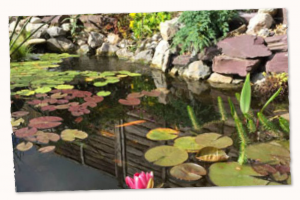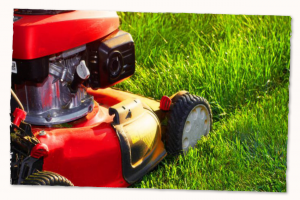 July is often the warmest month of the year but it can also be the wettest month of the summer – perfect conditions for plant and weed growth, but also for the spread of plant disease, so be vigilant and respond quickly to any problems. On the hot dry days make sure you enjoy lots of time relaxing in and enjoying your garden while it is at its most colourful. Your plants will be developing into mature shapes and colours so make the most of it!
July is often the warmest month of the year but it can also be the wettest month of the summer – perfect conditions for plant and weed growth, but also for the spread of plant disease, so be vigilant and respond quickly to any problems. On the hot dry days make sure you enjoy lots of time relaxing in and enjoying your garden while it is at its most colourful. Your plants will be developing into mature shapes and colours so make the most of it!
If time is limited in the garden this month, here are Jon’s top tips:
1) Remove faded blooms from Roses to encourage repeat flowering and apply a slow release feed such as Miracle-Gro Continuous Release Rose & Shrub Food.
2) Ensure tubs and hanging baskets of patio plants are well-watered in hot weather. Now may be a good time to consider installing a water butt to collect rainwater.
3) Keep an eye out now for Box Blight on hedging and topiary. Treat plants with Fungus Fighter Plus if infection is suspected.
4) Feed tomato plants with Tomorite as fruit trusses develop and ensure the plants are kept evenly watered.
5) Pick runner beans as they develop to ensure continued cropping. A top tip is to mist the flowers with water in the evening as this encourages the beans to set.
6) Now is a great time to choose summer flowering perennials such as Rudbeckia, Salvia and Agapanthus. We have a fantastic range both in-store and online to choose from.
If you have a little more time to spare…


Be nice to bees – they play an important role in pollination, so grow plants such as campanulas, cotoneaster, hardy geraniums, geums, heathers, lavender, thyme and monarda to attract them into your garden.
Cut privet and other fast-growing hedges regularly to keep them tidy and encourage thick, healthy growth (ensure there are no birds nesting first). Apply fertiliser and top up the mulch around the base to conserve moisture. When cutting a hedge, taper the sides slightly as you cut, leaving the base a little wider than the top, this will allow more light to reach the lower levels.
Don’t forget to give your shrubs and trees the once over. Prune back the spring flowering shrubs and check all trees for extra growth forming at the base, as these will take goodness away from the main tree. Use sharp secateurs to remove.
Deadhead Roses and feed them regularly. Remember to spray them to control black spot, mildew and aphids – we recommend Roseclear Ultra and Vitax Plant Guard. Remove faded flowers on Delphiniums and Lupins as this may encourage a second flowering.

Don’t forget your houseplants! Many will benefit from being placed outdoors, in a cool position, in good weather. Water them as often as they need it and feed regularly. It is best to do any watering, inside or outside, first thing in the morning or last thing at night, to avoid scorching the leaves.
GARDEN STRUCTURES
Mulching borders can help retain moisture, and keep down the weeds – this will save a lot of work. A really thick layer of mulch (2-3inches all over) works best.
Take advantage of the dry weather and catch up on any painting jobs – sheds, fences, furniture are all grateful for a fresh coat.
WILDLIFE


EDIBLE PLANTS
Try to hoe between your vegetable crops during dry weather to keep the weeds down. If you do it when the ground is wet, the weeds may re-root and you will be faced with the same problem again in a few weeks’ time.
Apricots should start to ripen by the end of the month, as should peaches, depending on the chosen varieties. The fruits should feel slightly soft to the touch before picking, but be very careful not to bruise them when testing to see if they are ripe. Continue picking soft fruits such as redcurrants, raspberries and blackberries as they will be at their best this month.
Trained fruit trees will need to be summer-pruned to allow light and air to the fruits and to make picking easier. As this year’s shoots start to get woody (test this by bending between thumb and forefinger), prune them back to about five leaves. Do not prune leading shoots or those needed to extend the framework of branches.
Keep checking and removing side shoots from tomatoes.
Pick beans regularly and keep them well-watered.
Pick maturing vegetables while they’re young on a regular basis to maintain continuity, quality and a full flavour. Continue earthing-up main crop potatoes.
LAWNCARE

Continue to mow your grass regularly raising the height of the cut in dry weather. If it is looking tired and run down, give it a boost now with a good feed such as Miracle-Gro Lawn Feed 1kg.
IN THE GREENHOUSE
Soak the floor morning and evening to keep up the humidity and remove faded flowers and dropped foliage to prevent the build-up of fungal diseases.




